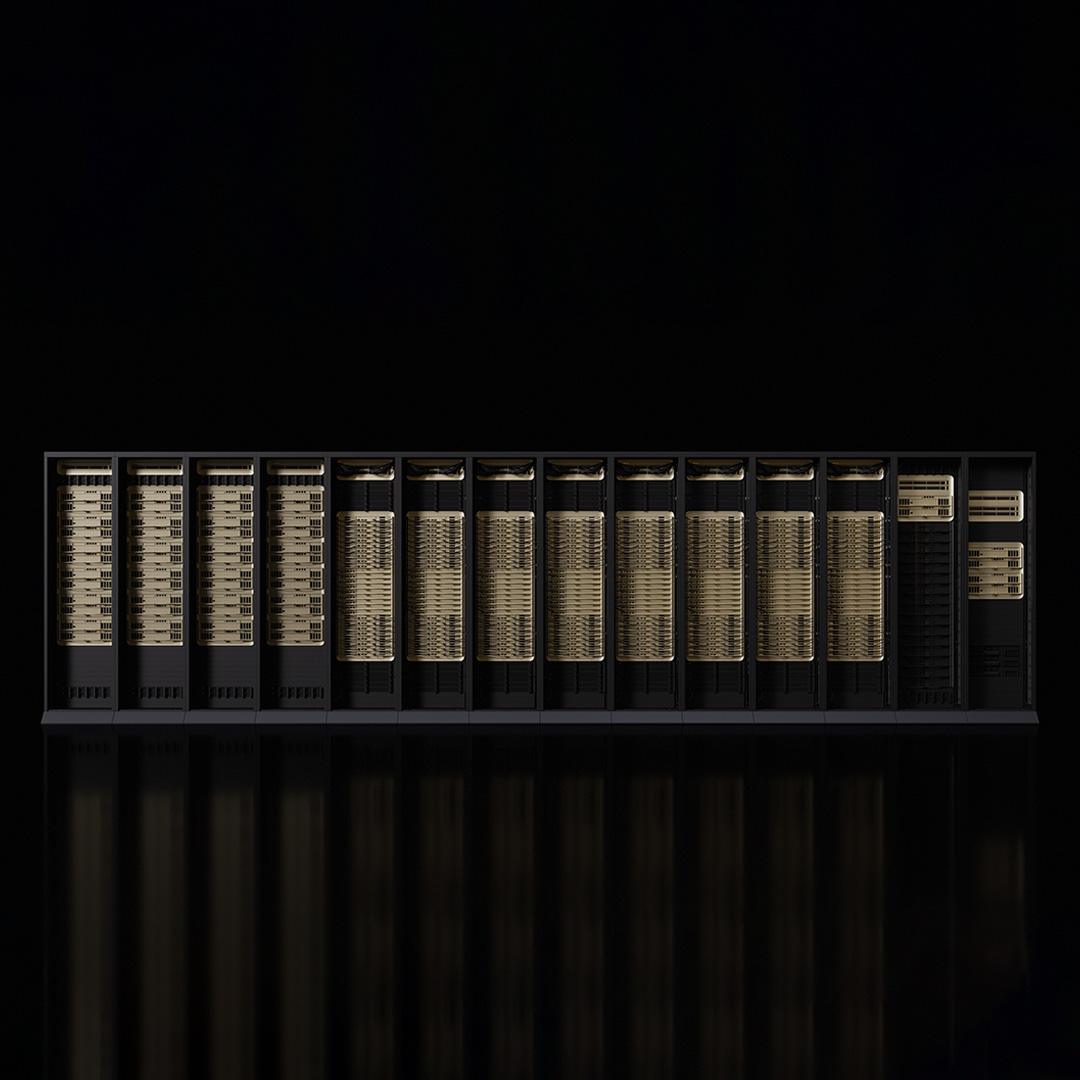The Future of Software in an Era of Specialized Processing

For software developers, the 2020s will be the good old days. Everything from datacenters to cars and factories is being redesigned to be software-defined. Salesforce declared “the end of software” on February 7, 2000: since then global revenue for enterprise software has grown by nearly 8x and is approaching $700 billion. And the billions of power sockets, tennis shoes, and other inert objects that make up our world will soon become intelligent through integrated computing and cloud analytics.
But it will also be far from easy. Edge servers face tight constraints when it comes to heat, volumetric space, and cost. Datacenters are struggling to find ways to steadily increase workloads without increasing energy, rack space, or water consumption. The often sizeable amounts of energy and cost consumed by artificial intelligence (AI) are already under the microscope. Security threats, meanwhile, are becoming more expensive, frequent, and sophisticated.
Specialized processing—the art and science of combining CPUs, GPUs, DPUs, and other devices in creative and unexpected ways and optimizing them by varying cache size, speed, I/O, and other attributes—has emerged as the likely successor to Moore’s Law for driving innovation. Instead of a myopic focus on clock speeds, system builders will focus on four attributes: performance, efficiency, optimization for tasks or fit-for-software and platform diversity or fit-for-device
Specialized processing, however, upends business as usual for software developers. One of our major goals at Arm is to make this transition as smooth as possible to leverage these key platform benefits.
Frictionless software development
The key to enabling a robust software ecosystem is to strive towards a frictionless development experience for a wide array of developers to achieve multi-architecture support for their software. This involves enabling easy platform access to write code, test functionality, and perform required optimizations. Works on Arm is one such initiative that provides open-source software developers with free and easy access to a variety of platforms in partnership with our cloud partners such as AWS, Equinix and Oracle.
As we look to the future and building increasingly immersive and compelling experiences for players, we are excited to use AWS Graviton3-based EC2 C7g instances
Mark Imbriaco, Senior Director of Engineering at Epic Games
Frictionless development also requires the availability of developer tools across the software stack. For the majority of cloud and edge deployments, this includes the ability to develop your applications with cloud-native software development practices. Over the past few years, in collaboration with our partner ecosystem, we have enabled the majority of projects across the Cloud Native Computing Foundation landscape, and we continue to drive further adoption of multi-architecture support. Through our engagements in the ecosystem and the success of Arm partners in delivering best price-performance compute platforms based on Arm Neoverse, we have learned that customers moving their applications to these platforms are finding it much easier and less resource-intensive.
For edge and 5G deployments, we are driving software adoption by collaborating in foundations such as Magma and O-RAN Alliance further enabling the intersections of leveraging unique platform characteristics for these deployments via software. There is a healthy set of ecosystem activities that drives software development that will provide a foundation for open, flexible, and affordable carrier-grade networks for emerging economies through these initiatives.
Driving standardization in a very fragmented IoT and edge landscape is also critical to provide developers with a consistent experience. For this, we’ve strategically invested in efforts such as Project Cassini and Project Centauri that simplify the process for bringing cloud-native software experiences to far-edge devices such as remote servers and 5G base station and IoT gateways, and other near-edge endpoints based on Arm technologies.
Both initiatives consist of three elements: a product certification process outlining hardware and firmware specifications, a security certification program run in conjunction with PARSEC and PSA Certified, and reference implementation guides for software developers. Hardware and security certification essentially eliminate surprises and hiccups in the compatibility process: developers will know what to expect from devices that meet the Cassini or Centauri standards. The reference designs, meanwhile, remove any time, cost, and effort required to develop on Arm architectures.
Similarly, to accelerate 5G software development efforts, we have launched Arm 5G Solutions Lab to foster closer collaboration between software developers, OEMs, carriers, and semiconductor designers to deliver 5G solutions.
ISV partnerships
For ISVs developing software on traditional architectures, transitioning their software to Arm Neoverse based platforms provides the opportunity to deliver compelling price-performance and energy savings for end customers.
Rancher Labs & Arm have continued collaboration towards providing customers with the most efficient cloud-native architecture at the edge with k3s on Arm platforms enabling the various use cases outlined by Project Cassini
Sheng Liang, President of Engineering & Innovation, SUSE Rancher
Arm ecosystem has programs driving ISV adoption, such as AWS Graviton Ready initiative that provides customers technically validated solutions by AWS and are ready to be integrated with AWS services. In addition, technical guidance is provided by Getting started with AWS Graviton guide. For customers deploying on Ampere Systems, validated Ampere Solutions provides the list of software support.
In addition, our software partners are leveraging Arm Neoverse based platforms to enable various use cases such as:
- VMware Project Monterey enables tight integration with Arm based Data Processing Units (DPUs) on a x86 host to offload and accelerate critical infrastructure services like networking, security and storage from the CPU. This enables the DPU to be an infrastructure fabric control point and unlocks infrastructure level innovations in bringing the VMware Cloud Foundation platform to developers
- Red Hat OpenShift on Arm Neoverse enables enterprise grade managed Kubernetes offering on Arm Neoverse platforms such as AWS Graviton processors
- SUSE K3s: Kubernetes at the edge project delivers a lightweight Kubernetes distribution specifically designed for edge use cases and enables production workloads across resource-constrained, remote locations or on IoT devices
Performance
All this software enablement brings significant cost-performance benefits for deploying a wide range of software and applications at cloud scale compared to equivalent traditional architectures. Hyperscale and cloud providers globally have seen significant performance gains, cost savings, and price-performance optimizations by offering software workloads running on Arm-based instances.
We had already seen that Graviton2-based C6gn instances provided us the best price performance for some of our CFD workloads
Pat Symonds, CTO, Formula 1 Management
The graphic below illustrates how various workloads outperform with Arm Neoverse based AWS Graviton2 processors, Oracle Cloud Infrastructure (OCI) Ampere Altra A1 compute instances, Tencent Cloud Arm offerings, Alibaba Cloud Arm instances:

Together with our ecosystem partners, we are transforming how next-generation infrastructure designs deliver value to customers – whether it is power efficiency requirements at the edge, high performance and scalability needs in the cloud, or better security provided by specialized processing.
We are dedicated to increasing the rate of innovation and accelerating deployments for our customers by enabling frictionless development for developers writing software for tomorrow.
Curious About Arm Neoverse?
You’re not alone. Hear how customers are increasing performance, cutting power and changing the way they think about the cloud and the edge.
Any re-use permitted for informational and non-commercial or personal use only.













